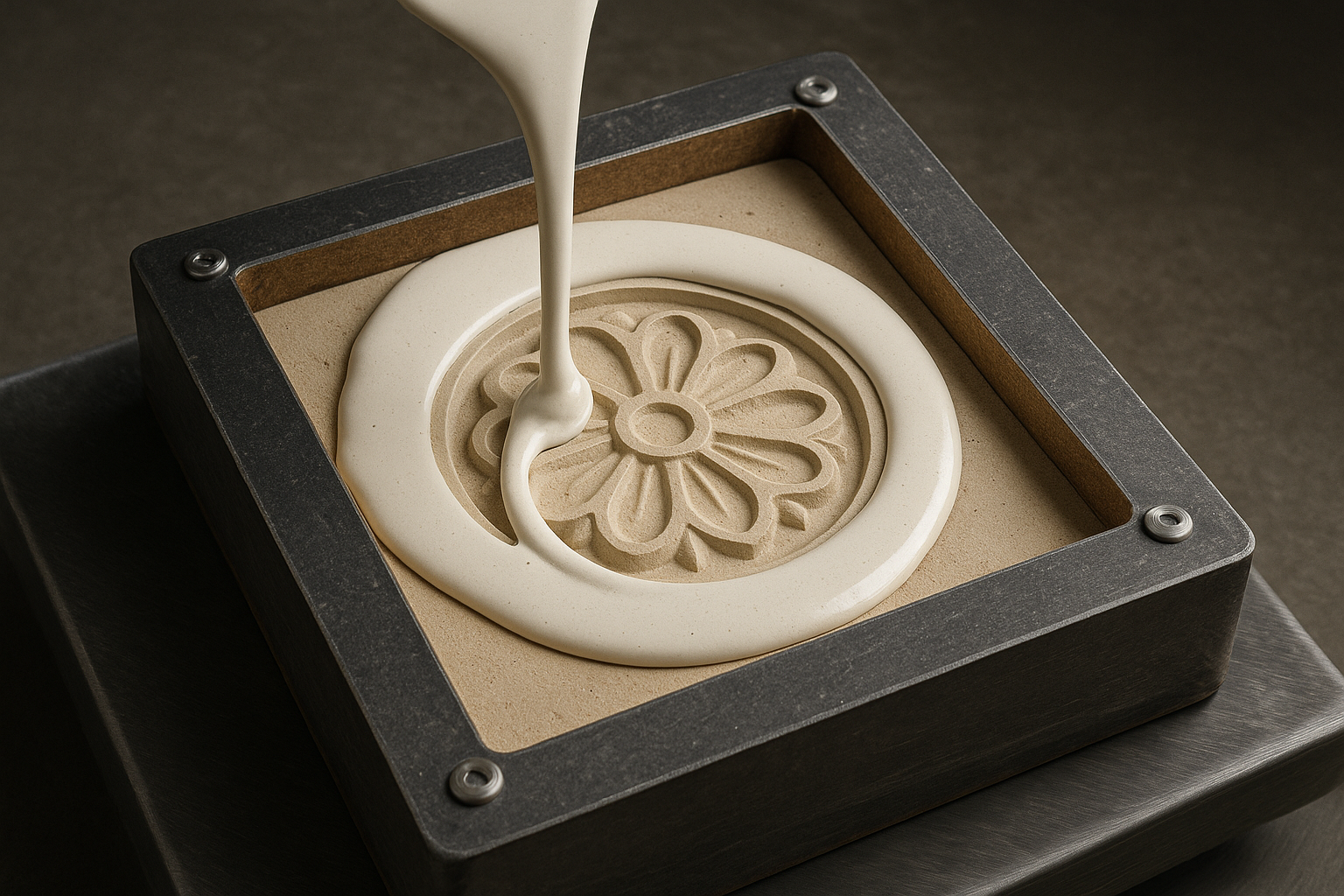

Plaster Casting
Nexams Leading the Way in Injection Molding for Plastic and Rubber Parts Across Various Industries
Plaster casting is a metal casting process that utilizes plaster-based molds to produce highly detailed and precise parts. This technique is especially valued for its ability to handle intricate shapes, thin-walled designs, and high-precision needs. The plaster casting process involves preparing a pattern, mixing and pouring plaster of Paris into a mold, allowing it to harden, and finally casting molten materials like aluminum or magnesium. Many local and nearby vendors and suppliers contribute to the ease of accessing essential materials and tools for this process, fostering ethical collaborations across industries.
This method offers a cost-effective, smooth, and versatile solution suitable for low-volume production and investment castings. With strong support from vendors and expert manufacturers, it’s trusted for motor components, aerospace fittings, and artistic elements. The plaster casting fabrication method enables precision and quality, supported by a network of suppliers and local sourcing channels that help streamline workflow and reduce lead time.
Whether used in jewelry, art, medical tools, or mechanical parts, the plaster casting manufacturing process is known for producing refined results. Dedicated vendors, manufacturers, and suppliers work together to ensure consistent quality and thoughtful innovation. With nearby support teams and ethical sourcing from local suppliers, the method rivals more expensive options in both outcome and values.
Benefits of Technology
Capable of replicating fine details and achieving excellent surface finishes that many manufacturers appreciate, especially when coordinated with nearby suppliers and local vendors for optimal outcomes.
Supports complex geometries, thin-walled features, and delicate designs made possible through the collaborative efforts of ethical manufacturers and experienced vendors who provide critical support during design reviews.
Compatible with non-ferrous metals like aluminum, zinc, and copper, with suppliers and nearby manufacturers offering materials tailored to these unique casting needs. Vendors ensure timely distribution, improving consistency.
Requires minimal tooling, reducing plaster casting machining process complexity—an advantage appreciated by suppliers and vendors working closely with manufacturers to lower tooling investments while ensuring precision.
Ideal for prototyping and plaster casting industrial application due to fast turnaround. Local and nearby vendors and support-focused suppliers assist with quick adjustments and design changes.
Uses relatively low-cost materials and processes, often sourced from suppliers working in close coordination with nearby vendors and supported by manufacturers ensuring ethical and sustainable production.
Produces high-precision motor components with consistent quality, achieved through the combined efforts of local manufacturers, trusted suppliers, and nearby vendors offering engineering support.
A viable alternative to more expensive investment castings and die casting. Manufacturers, vendors, and suppliers promote it as a cost-effective option for both local and global industrial support ecosystems.
Plaster Casting
Nexams Leading the Way in Injection Molding for Plastic and Rubber Parts Across Various Industries
Plaster casting is a metal casting process that utilizes plaster-based molds to produce highly detailed and precise parts. This technique is especially valued for its ability to handle intricate shapes, thin-walled designs, and high-precision needs. The plaster casting process involves preparing a pattern, mixing and pouring plaster of Paris into a mold, allowing it to harden, and finally casting molten materials like aluminum or magnesium. Many local and nearby vendors and suppliers contribute to the ease of accessing essential materials and tools for this process, fostering ethical collaborations across industries.
This method offers a cost-effective, smooth, and versatile solution suitable for low-volume production and investment castings. With strong support from vendors and expert manufacturers, it’s trusted for motor components, aerospace fittings, and artistic elements. The plaster casting fabrication method enables precision and quality, supported by a network of suppliers and local sourcing channels that help streamline workflow and reduce lead time.
Whether used in jewelry, art, medical tools, or mechanical parts, the plaster casting manufacturing process is known for producing refined results. Dedicated vendors, manufacturers, and suppliers work together to ensure consistent quality and thoughtful innovation. With nearby support teams and ethical sourcing from local suppliers, the method rivals more expensive options in both outcome and values.
Benefits of Technology
Capable of replicating fine details and achieving excellent surface finishes that many manufacturers appreciate, especially when coordinated with nearby suppliers and local vendors for optimal outcomes.
Supports complex geometries, thin-walled features, and delicate designs made possible through the collaborative efforts of ethical manufacturers and experienced vendors who provide critical support during design reviews.
Compatible with non-ferrous metals like aluminum, zinc, and copper, with suppliers and nearby manufacturers offering materials tailored to these unique casting needs. Vendors ensure timely distribution, improving consistency.
Requires minimal tooling, reducing plaster casting machining process complexity—an advantage appreciated by suppliers and vendors working closely with manufacturers to lower tooling investments while ensuring precision.
Ideal for prototyping and plaster casting industrial application due to fast turnaround. Local and nearby vendors and support-focused suppliers assist with quick adjustments and design changes.
Uses relatively low-cost materials and processes, often sourced from suppliers working in close coordination with nearby vendors and supported by manufacturers ensuring ethical and sustainable production.
Produces high-precision motor components with consistent quality, achieved through the combined efforts of local manufacturers, trusted suppliers, and nearby vendors offering engineering support.
A viable alternative to more expensive investment castings and die casting. Manufacturers, vendors, and suppliers promote it as a cost-effective option for both local and global industrial support ecosystems.
Q: What are the maximum estimated shipping times from the factory to global regions for Brazing parts via sea and air?A: By Sea: Asia: 15–20 days, Europe: 25–35 days, North America: 30–40 days, South America: 35–45 days, Middle East: 14–18 days, Africa: 20–28 days, Oceania: 22–30 days
By Air: Asia: 1–3 days, Europe: 3–5 days, North America: 4–6 days, South America: 5–7 days, Middle East: 1–2 days, Africa: 3–5 days, Oceania: 4–6 days
